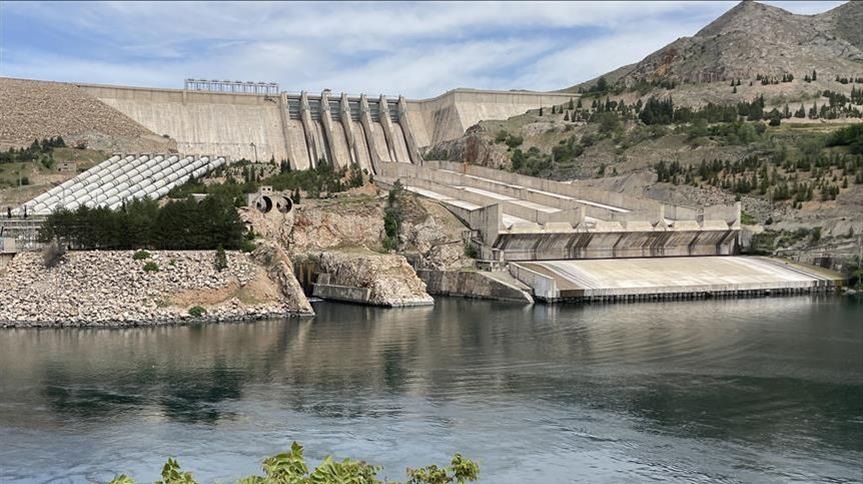News
JUST IN: China Begins World’s Largest Dam, India Jittery

China has officially begun construction on what will soon be the world’s largest hydropower dam, located in Tibet on the Yarlung Tsangpo River.
This ambitious project, known as the Motuo Hydropower Station, was launched with a ceremony led by Chinese Premier Li Qiang, marking the start of a $12 billion initiative.
Once completed, the dam is expected to generate more energy than the iconic Three Gorges Dam, making it the largest hydropower project on the planet.
However, its location and scale have raised serious concerns from neighboring countries like India and Bangladesh, as well as environmentalists.
The Yarlung Tsangpo River flows south through Tibet and into India, where it becomes the Siang and Brahmaputra rivers, before eventually reaching Bangladesh.
The river is a vital water source for millions of people across these countries, which are deeply worried about the potential implications of the new dam.
China’s control over this critical waterway could give it the power to significantly impact water flows downstream.
It is a possibility that has stirred fears of water shortages, especially in India’s northeastern states of Arunachal Pradesh and Assam, as well as in Bangladesh.
Indian officials, including Arunachal Pradesh Chief Minister Pema Khandu, have expressed alarm over the dam’s potential to disrupt their local ecosystems and economies.
Khandu recently voiced concerns that the dam could dry up the Siang and Brahmaputra rivers, putting at risk both agriculture and indigenous communities.
He further warned that the dam could serve as a “water bomb,” with the possibility of catastrophic flooding if China suddenly releases water from the dam, devastating the downstream areas.
India has formally raised these issues with China, urging Beijing to consider the interests of downstream countries and to ensure transparency and consultation throughout the project.
In response, China has defended its right to develop hydropower resources in Tibet, asserting that it has taken the potential downstream impacts into account.
Despite these assurances, India is moving forward with plans to construct its own hydropower dam on the Siang River, potentially acting as a safeguard against sudden water releases from China’s dam.
Bangladesh has also expressed its concerns, with officials requesting more information from China about the dam’s potential effects.
The country relies on the Brahmaputra, which is vital for irrigation, drinking water, and transport, and any significant changes to its flow could be disastrous.
The Motuo Hydropower Station is located in the Tibetan Autonomous Region, within a massive canyon known as the world’s deepest and longest on land, where the Yarlung Tsangpo makes a dramatic turn around the Namcha Barwa mountain.
This area, known as the “Great Bend,” is rich in hydropower potential, with the river dropping hundreds of meters in elevation.
To harness this energy, Chinese authorities plan to drill multiple long tunnels through the mountain to divert parts of the river to power a series of cascading dams.
China’s broader hydropower strategy is part of an initiative called “xidiandongsong,” which translates to “sending western electricity eastwards.”
This policy aims to channel the vast energy generated in Tibet’s remote regions to meet the electricity needs of China’s industrial eastern provinces.
Proponents of the project argue that it will help reduce pollution by providing clean energy and stimulate the local economy in rural Tibet.
However, activists and Tibetans in the region view the dams as another instance of Beijing’s exploitation of Tibet’s natural resources at the expense of its indigenous people.
In fact, protests against hydropower projects have been met with severe crackdowns, including the arrest and beating of protesters.
Last year, a wave of arrests followed protests against another dam, highlighting the increasingly repressive climate in Tibet under Chinese rule.
Environmental concerns are also significant.
Critics warn that the construction of massive dams in a region known for its seismic activity poses serious risks, including the potential for catastrophic earthquakes or flooding.
Furthermore, the damming of such a biodiverse area could disrupt local ecosystems, threatening species and habitats that are already vulnerable.
In conclusion, while China touts the Motuo Hydropower Station as a triumph of clean energy and economic development, the project has sparked widespread alarm across the region.
With neighboring countries like India and Bangladesh facing potential threats to their water security, and Tibetans caught in the middle, this mega-dam represents a geopolitical flashpoint.
It also represents a complex issue that intertwines resource management, regional stability, and human rights.
The long-term consequences of China’s actions could shape the future of South Asia’s rivers and its geopolitical landscape for decades to come.
For Diaspora Digital Media Updates click on Whatsapp, or Telegram. For eyewitness accounts/ reports/ articles, write to: citizenreports@diasporadigitalmedia.com. Follow us on X (Fomerly Twitter) or Facebook












